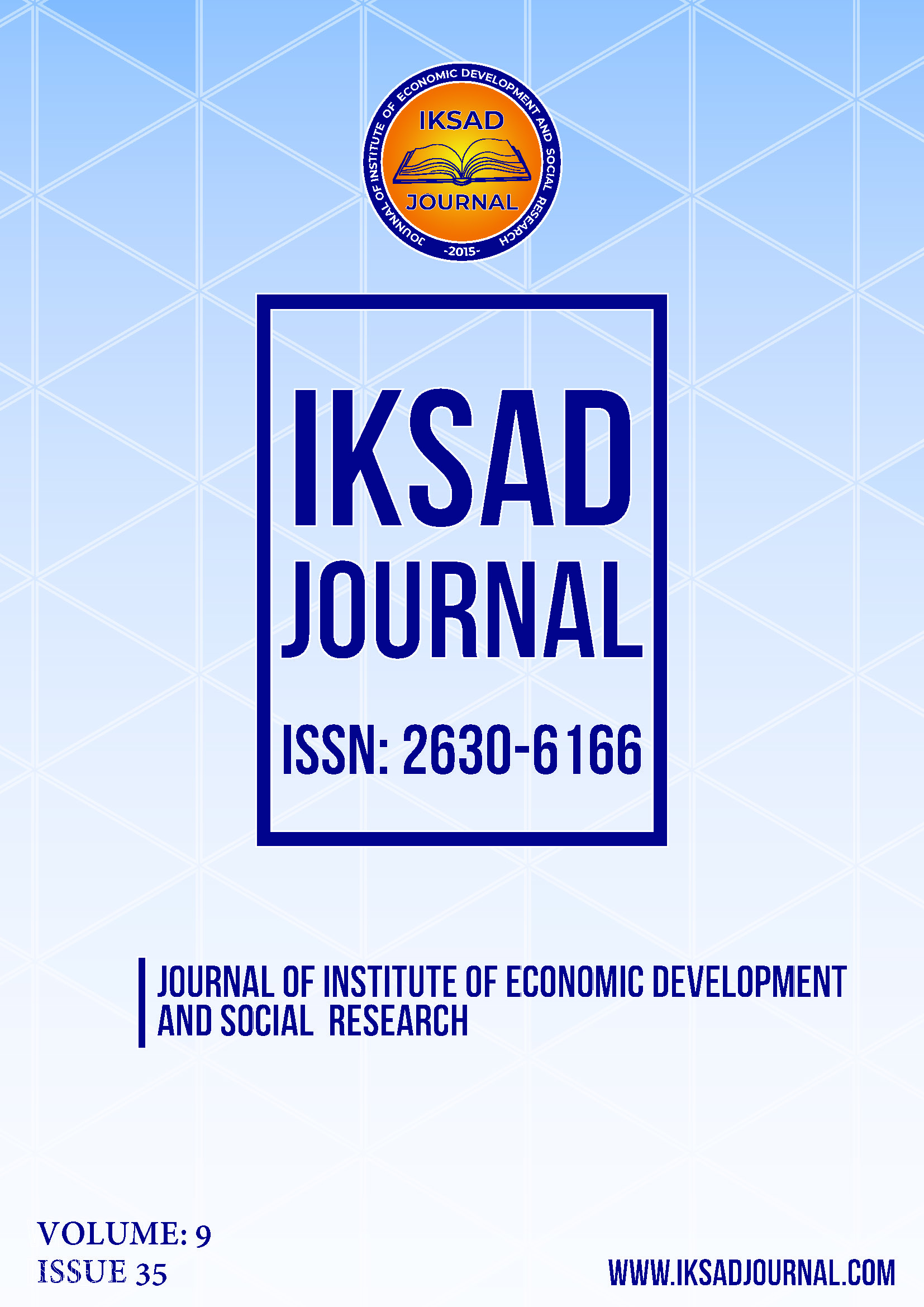Osho's Approach to Yoga and Tantra Methods on the Path to Ultimate Liberation
DOI:
https://doi.org/10.5281/zenodo.13128378Keywords:
Osho, Tantra, Yoga, Ultimate Salvation, ReligionAbstract
Throughout history, humanity has mostly viewed the life it has lived as a stepping stone to an eternal life. For this reason, human beings have constantly tried to investigate and make sense of the nature, why and why of existence. Man's search for meaning has revealed many intellectual movements. This quest, which originates from the natural structure of man, expresses itself even more strongly in different ways, even though it seems to be suppressed in today's society of pleasure and speed, where the tangible is constantly valued. Nowadays, people living in depression are searching for ways that will ultimately lead them to salvation, and at this point they are turning to new religious movements. In this context, the Osho movement attracted our attention. Osho's glorification of the human body and expansion of areas of freedom, contrary to masochistic approaches to achieving ultimate salvation, are attractive to individuals. Osho sees yoga and tantra as different methods and claims that tantra is the more effective scientific technique in reaching ultimate salvation. Therefore, in this article, Osho's approach to the teaching of Tantra as a way to attain ultimate liberation will be discussed.
References
Arslan, Hammet. Hint Dinlerinde Bir Arınma ve Aydınlanma Yolu Olarak Yoga. İzmir: Dokuz Eylül Üniversitesi, Sosyal Bilimler Enstitüsü, Doktora Tezi, 2013).
Aydın, Mehmet. “İslâm Felsefesi”, TDV İslam Ansiklopedisi. 2/10-14. İstanbul: TDV Yayınları, 1989.
Burger, Jerry M. Kişilik, çev. İnan Deniz Erguvan Sarıoğlu. İstanbul: Kaknüs Yayınları, 2016.
Çağrıcı, Mustafa. “Ahlâk”, TDV İslam Ansiklopedisi. 2/1-9. İstanbul: TDV Yayınları, 1989.
Demirci, Kürşat. “Hinduizm”, TDV İslam Ansiklopedisi, 18/112-116. İstanbul: TDV Yayınları, 1998.
Demirli, Ekrem. “Vahdet-i Vücûd”, TDV İslam Ansiklopedisi. 42/431-435. İstanbul: TDV Yayınları, 2012.
Erdem, Hüsamettin. “Ahlaki İlke ve Değerlerin Evrenselliği Sorunu”. Felsefe-Edebiyat ve Değerler Sempozyumu, ed. Cevdet Kabakcı ve Serdar Yakar. 190-193. Ankara: Öncü Basımevi, 2014.
Ertuğrul, İsmail Fenni. Vahdet-i Vücûd ve İbn-i Arabî. İstanbul: İnsan Yayınları, 1997.
Feuerstein, Georg. The Yoga Tradition, Hohm Press, Arizona, 2001.
Freud, Sigmund. Uygarlığın Huzursuzluğu, çev. Zeynep Ünalan. İstanbul: Kapra Yayıncılık, 2021.
Günay, Nasuh. “Yoganın Mahiyeti ve Çeşitleri”. Süleyman Demirel Üniversitesi İlahiyat Fakültesi Dergisi, 2/19 (2007), 73-76.
Köker, Yasemin. Muhyiddin İbnü’l Arabî’nin Vahdet-i Vücud Düşüncesinin Ayetleri Tefsirindeki Yeri. Kayseri: Erciyes Üniversitesi, Sosyal Bilimler Enstitüsü, Doktora Tezi, 2021.
Osho, Tantra, Spiritüellik ve Cinsellik, çev. Niran Elçi. İstanbul: Omega Yayınları, 2020.
Osho, Tao Hakikatin Yolu, çev. Nurdan Soysal. 1. Cilt. İstanbul: Omega Yayınları, 2022.
Osho, Yoga 1, çev. Nilüfer Epçeli. İstanbul: Omega Yayınları, 2022.
Özkan, Ali Rafet. “Neo-Tantrizm”, Yeni Dini Hareketler Ansiklopedisi, ed. Süleyman Turan-Emine Battal. 378-380. İstanbul: Okur Akademi, 2020.
Tanyu, Hikmet. “Büyü”, TDV İslam Ansiklopedisi. 6/501-506. İstanbul: TDV Yayınları, 1992.
Tunçbilek, Hüseyin. “Muhyiddin İbn Arabî’de Vahdet-i Vücûd Telâkkisi”, Harran Üniversitesi İlahiyat Fakültesi Dergisi, 19 (Ocak-Haziran 2008), 8-10.
Werner, Karel. Yoga And Indian Philosophy, Motilal Banarsidass, Delhi, 1998.
Yitik, Ali İhsan. “Yoga”, TDV İslam Ansiklopedisi. 43/558-559. İstanbul: TDV Yayınları, 2013.
Downloads
Published
How to Cite
Issue
Section
License
Copyright (c) 2024 IKSAD JOURNAL

This work is licensed under a Creative Commons Attribution-NonCommercial 4.0 International License.


